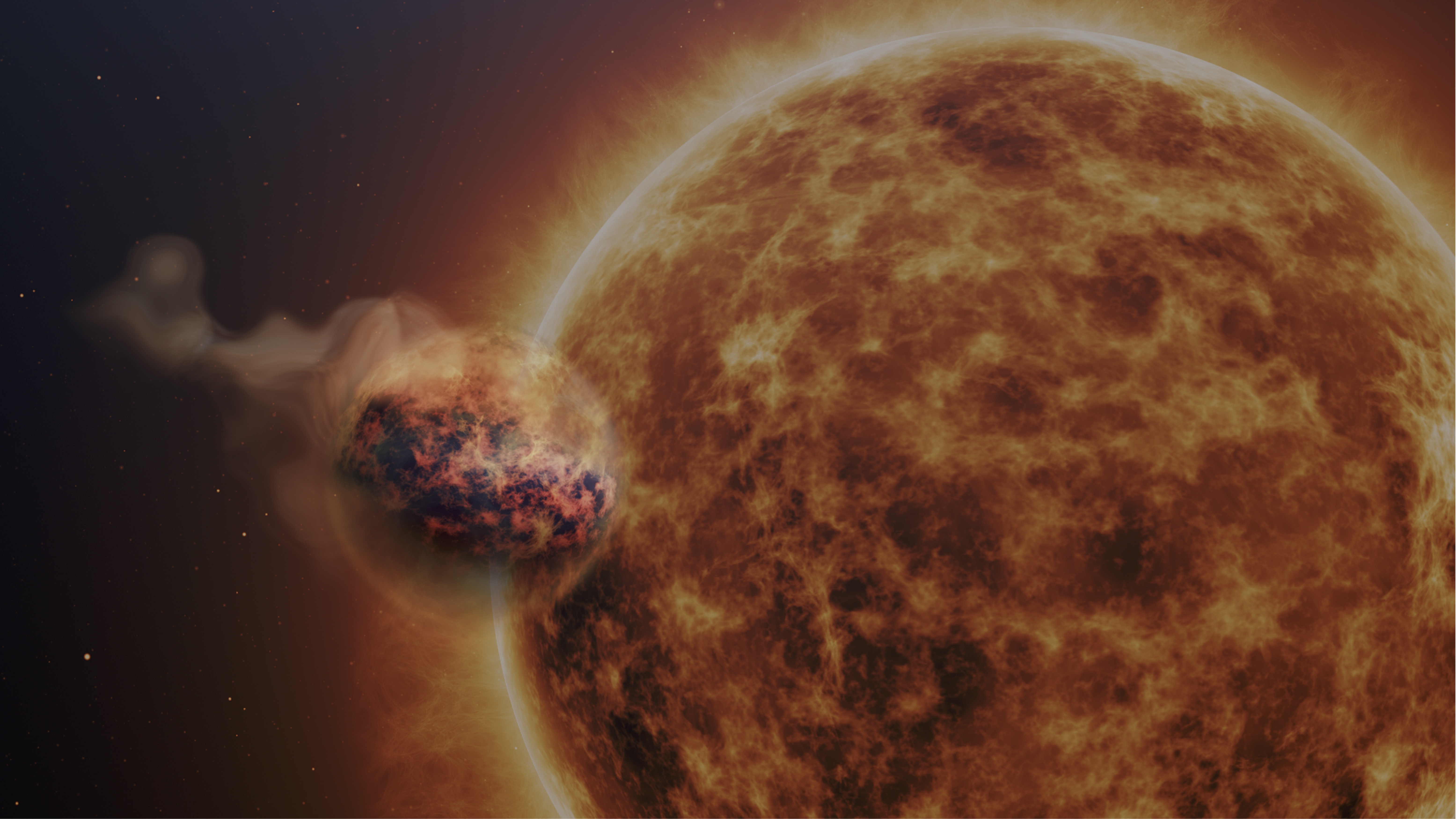Inflated gasesous exoplanets
In collaboration with the MIRI Guaranteed-time observation team, we have conducted the first mid-infrared detection of sulphur dioxide (SO2) in the atmosphere of WASP-107b, a very low-density super-Neptune at the edge of the Neptunian desert, extending the temperature range of exoplanets exhibiting detected SO2 from ∼1200 K down to ∼740 K (Rustamkulov et al., 2023; Tsai et al., 2023). The work conducted on atmospheric retrievals not only indicates the prevalence of photochemistry in the upper atmosphere but also reveals the presence of silicate clouds. This work leaves open questions regarding the role of disequilibrium chemistry in the atmosphere of this super-Neptune. The study of photochemistry is therefore a strong entry point to understanding the upper atmospheric irradiation processes that govern such transitional planets.

Most of detected exoplanets orbit really close to their star, undeniably facing strong irradiation conditions. Due to this irradiation, low mass planets such as Neptune-like ones are likely to face atmospheric escape and a drastic increase of their atmospheric scale height. The non-trivial link between irradiation, planetary gravity, temperature and chemistry at work in the upper atmosphere has never been made through observation. In that context, the accepted JWST cycle 2 proposal (PID 2950), that I am associated with, will sound the presence of photochemistry in the atmosphere of 3 exoplanets, experiencing different irradiation conditions. Using the refractory nature of sulphur we will start constraining the elemental ratios (Turrini et al., 2021). Next step is to obsreve cooler irradiated transitional planets to sound their full phase-curve (when the planet emission is tracked along an entire orbit) in search of photochemistry on the day-side and clouds on the night-side.